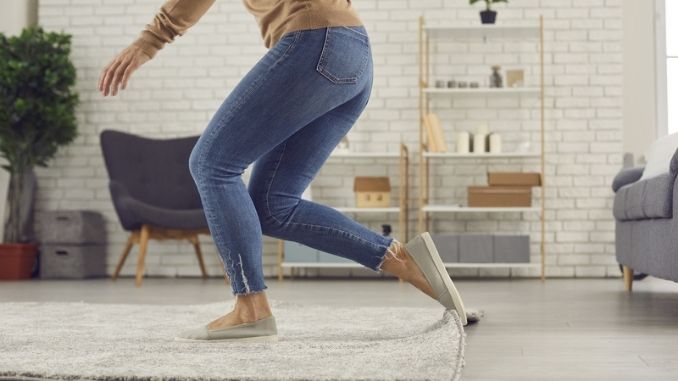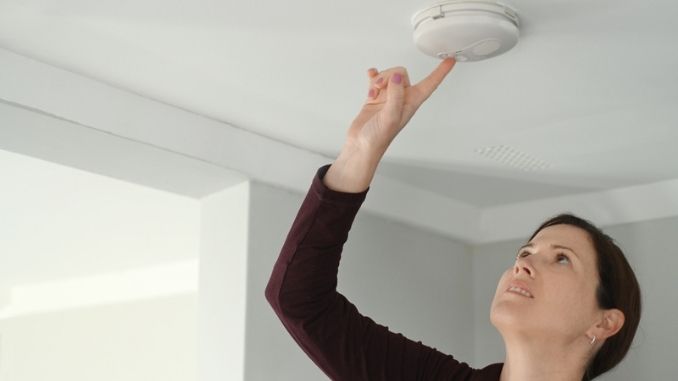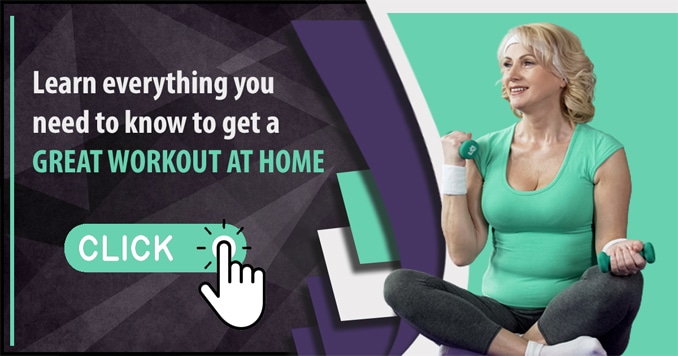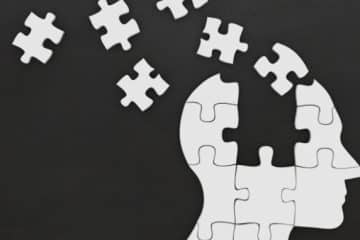Home can be a dangerous place.
In 2018, an estimated 125,300 preventable injury-related deaths occurred in homes and communities. That was about 75 percent of the preventable injury-related deaths that year, according to the National Safety Council. An additional 37.6 million people suffered non-fatal medically consulted injuries, meaning they had to see the doctor for treatment.
Over the last 10 years, home and community deaths have increased by 62 percent, and the death rate per 100,000 people has increased by 50 percent. In 2019, those numbers went up again. There were 173,040 preventable injury-related deaths, and 48.3 million preventable injuries requiring medical attention. Comparing 2019 to 2018, home deaths increased 4.9 percent.
Indeed, home can be a dangerous place, particularly for seniors. To keep your home safer for you and your loved ones, follow these recommendations.
1. Prevent Falls
Falls are the leading cause of injuries and deaths for people 65 and older. About 30 million older adults fall each year, and those falls cause about 30,000 deaths. About 300,000 older adults are hospitalized each year for hip fractures, of which over 95 percent are caused by falls.
To help prevent falls, follow these tips:
Check Your Rugs: Rugs are a common tripping hazard. Either get rid of them completely or put tape or rug pads under them to keep them from sliding.
Safety-Proof Stairs: Provide adequate handrails on both sides of the staircase. Adding attached carpeting or a runner to hardwood stairs can provide more traction and prevent sliding.
Increase Bathroom Safety: Place grab bars and nonslip mats in the bathroom and bathtub. Use a shower chair if needed.
Light It Up: Install sufficient lighting around the home, especially in dark areas and in bathrooms. Add nightlights in bedrooms and bathrooms as needed. Have flashlights available and within reach in the bedroom, kitchen, and living room.
Clear Clutter: Use storage rooms, bins, and closets to store items. Avoid leaving items out and around the floor where they may create a tripping hazard.
Train Your Pet: More than 86,000 people fall each year due to a pet. To reduce your risk, invest in some training for your four-legged friends. Use a baby gate to block kitchen entrances so there is no tripping over a pet while holding a hot dish. Also wait to feed your pet until you’re done cooking, and make sure food and water dishes are set back and away from highly trafficked areas.
Use Secure Footwear: Make sure your footwear fits well, has a non-slip sole, and is appropriate for the activity you’re doing. Slippers are typically a poor choice as they can cause you to slip. They may also become loose and fall off, increasing the risk of a fall.
Check All Cords: Electrical cords are notorious trip hazards. Make sure all of yours are tucked out of the way. Trim or remove window cords, and wrap up blind cords.
Improve Balance: Try exercises like tai chi, walking, weight lifting, and others to improve your balance so you can better avoid falls.
Check Your Eyes: Vision problems can lead to falls. Has your vision checked by your eye doctor at least once per year?
Clear Your Walks: If it snows, clear your outdoor steps and walks as soon as you can, or hire someone to do it for you. Use salt as needed to make the area less slippery.
2. Avoid a Fire
The Centers for Disease Control and Prevention (CDC) states that deaths resulting from fires in the home are highest among people age 65 and older and children under the age of five. Residential fires and burns are the third leading cause of unintentional home injury deaths.
To reduce your risk, follow these tips:
Smoke Detectors: Install these on every floor of the home, test them frequently, and replace their batteries once a year.
Fire Escape: Make a fire escape plan and practice it with your family members. Make sure escape routes are clear of clutter.
Candles: Monitor candles and never leave them unattended or near loose cloth like drapes or blankets.
Appliances and Tech Gadgets: Don’t overload electrical appliances, and make sure to recharge batteries away from loose cloth and combustible furniture. Never leave a recharging battery unattended, as it can overheat and start a fire. This includes rechargeable batteries in phones, laptops, and tablets.
Cooking: Cooking fires are the top cause of home fires and home injuries, according to the National Fire Protection Association. Stay with your food when you cook, and use timers to be sure you don’t leave food subjected to heat for too long.
Keep stoves free of flammable items like paperwork, oven mitts, or wooden utensils. Avoid wearing loose clothing around a stove, but do consider wearing long oven mitts to protect your arms. Use pots with two handles to make moving them easier.
If a pan catches fire, use a damp towel to deal with the flames. Never try to put the fire out with water.
When using a grill, place it at least 10 feet away from your home and any flammable objects, including shrubs and plants. Never apply charcoal lighter fluid after the fire has been lit, as this could cause an explosion.
Fire Extinguisher: Keep at least one fire extinguisher in your home and check it annually to make sure it’s in good working order.
Chimneys: Keep chimneys and dryer exhausts well-ventilated and free of flammable buildup by cleaning them regularly.
Space Heaters: Keep these away from anything flammable, including blankets, clothing, and curtains.
3. Avoid Scalding Burns
Each year about 3,800 injuries and 34 deaths occur due to scalding from excessively hot tap water. To prevent these burns, adjust the temperature settings of home water heaters to 120 degrees Fahrenheit or lower. Also consider installing temperature limiting, anti-scald faucets on bathtubs, showers, and sinks.
4. Be Aware of Carbon Monoxide
Low exposure to carbon monoxide can cause headaches and dizziness, while high levels can cause vomiting, impaired vision, and death. The gas is near impossible to detect by smell, sight, or sound, so make sure you install a carbon monoxide detector that alerts you if the levels go too high. Some smoke detectors have carbon monoxide capabilities as well.
Prevent carbon monoxide leaks by regularly servicing your HVAC system, water heater, and other appliances that use gas, oil, or coal every year.
5. Prevent Poisonings
Poisonings are the leading cause of accidental deaths. Though opioids are the most common culprits, many other items can present poisoning hazards too, including cleaning and home maintenance supplies and medications.
- Medications: Dispose of all unused medications and use some sort of medication organization tool to be sure you don’t take too much on any particular day.
- Chemicals/Cleaners: Secure all chemicals to protect children and pets, including cleaning supplies, pesticides, and turpentine. Use high cupboards with safety locks and lockboxes. Also keep all household cleaners, laundry, and dishwashing detergents out of reach of pets and kids.
- Containers: Never store household cleaners or chemicals in old drink bottles or food containers.
6. Protect from Outsiders
Older adults can be vulnerable targets to wrongdoers, even in their own homes. Make sure the home is secure with these tips:
- Locks: Ensure the doors and windows have stout and functional locks.
- Strangers: Never let strangers into the home. Install a peephole into the door and use it to be sure you know the person before you open the door. You may also want to consider installing a doorbell camera that you can access with your smartphone.
- Scams: Understand the many types of fraud that target the elderly, including telephone and email scams, to be sure you do not fall victim to them.
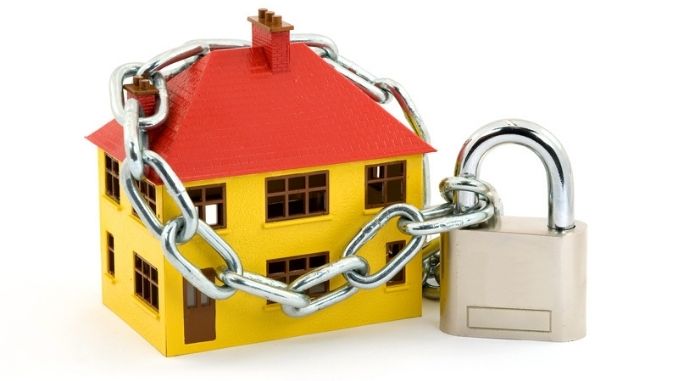 7. Use Caution When Mowing and Doing Yard Work
7. Use Caution When Mowing and Doing Yard Work
Nearly 80,000 Americans require hospital treatment for injuries caused by power mowers each year. Reduce your risk with these tips:
Wear Safety Equipment: This includes eye goggles, long pants, gloves, and closed-toed shoes.
Mow Only in Good Conditions: Avoid mowing on very hot days as this can lead to heatstroke.
Clear the Area: The most common mowing-related injuries are caused by flying projectiles, so clear the yard of debris before you start.
Avoid Inclines: Reduce your risk of a tip-over by staying away from steep hills or embankments.
Maintenance: Never service the mower while it’s running. Get help if you need to lift or move the mower manually. Wear protective gear when working on the mower, such as when changing blades.
Tools: Many injuries occur when using hammers, utility knives, saws, drills, and the like. Always take safety precautions, wear protective gear, and follow all usage directions. Never use a pressure washer while on a ladder—it could push you off.
8. Be Prepared
Keep a cell phone or telephone nearby. Make a list of your emergency contacts so that you can communicate quickly. Include the following:
- Your close family contact
- 9-1-1
- Medical doctors
- Hospitals
- Neighbors
- Police department
- Poison center
- Fire department
- Insurance companies
- Veterinarian
- Water company
- Power company
- Locksmith
If you are at risk of falling, make sure you have something with you that allows you to communicate with emergency personnel. This may be a special alarm worn as a bracelet or necklace to alert medical services in the event of an emergency.

Your home should be your sanctuary, so invest the time and energy into making it as safe of refuge as possible. Awareness is key, so look for any hidden hazards within your home and eliminate potential dangers wherever you can. Don’t hesitate to seek out advice from others, as it can be all too easy to overlook prospective threats in your home. Take active preventative measures now so you don’t become a sad statistic later.



